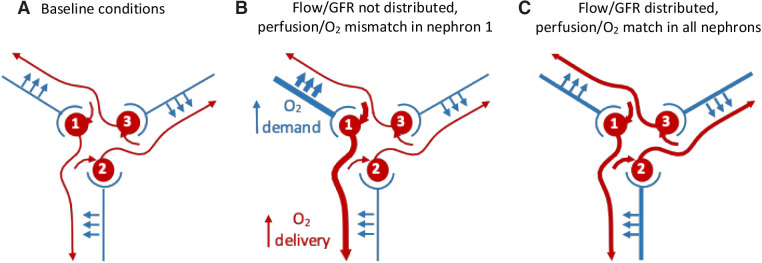Figure 1.
Distributed control of blood flow results in appropriate oxygen supply-demand matching through coordinated regulation of vascular resistance. In this simplified diagram, three glomeruli receive blood from their respective afferent arteriole. Efferent blood flow and tubular flows from the glomeruli are arranged so that each tubule receives its blood supply from another glomerulus; in vivo it may be up to five other glomeruli. If flow and filtered Na+ increase in NVU 1, reabsorption will generate a greater oxygen demand. If autoregulation is local, a mismatch between oxygen supply and demand would occur. NVU 1 needs to communicate with NVU 3, whose efferent vessel perfuses its tubule. This communication occurs through TGF-induced synchronization and leads to distributed autoregulation; the resistance upstream of every glomerulus is regulated partly by itself and partly by signals coming from all of the other NVUs in the arterial tree. O2, oxygen.

